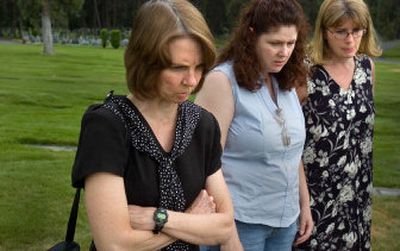A quest to uncover the lost identity of an unknown soul

When Lorrie Hegewald read that no autopsy had been done because of “limited funds in the coroner’s office,” it made her steaming mad. The John Doe, whose file was spread out in front of her, had been cheated – in life and again in death. He died unknown in a van in downtown Spokane on June 14, 1983. No kin ever claimed him. And then, no one did an autopsy.
Hegewald, a Spokane County deputy medical investigator, wanted to make things right for this John Doe, even though 23 years had passed since his death. She has worked in the medical examiner’s office since 1999. Long before “Cold Case” became a popular TV show, Hegewald listed as a yearly job goal her desire to identify one of the 20 John Doe cases still unresolved in medical examiner files.
Her boss, Spokane County Medical Examiner Sally Aiken, encouraged her by saying: “You can do it, and you will do it.”
The medical examiner’s office determines the cause and manner of death for people who die suddenly, violently or mysteriously. Staffers believe that every person, no matter how marginalized in life, deserves to be identified and claimed when they die.
Hegewald, 37, peruses unidentified-persons Web sites, even on her days off, and in February she zeroed in on her chosen John Doe. A newspaper clipping in his file quoted coroner’s reports that said the man was malnourished when found dead in the back of the van. His death was “consistent with natural causes.”
Witnesses said the “sickly and spacey” man had been sleeping in his van for several days before he died. His age was “approximately 30 years.”
A second newspaper article described a memorial service held for John Doe on July 28, 1983. The Rev. Frank G. Van Doren, then pastor emeritus for North Hill Christian Church, performed the five-minute service at Riplinger Funeral Home. John Doe was buried under a simple cement marker at Fairmount Memorial Park.
Funeral director Jim Egger said at the time, “I think it’s sad that a person can still get lost in this country.” Sadder still: No one attended the service.
Because so little was in the file, Hegewald wanted to exhume his body, but Aiken told her to look the file over again and then again some more. Hegewald did.
She noted that fingerprints had been taken off John Doe’s body and sent to the FBI in 1983; no match was found. Fingerprints, now matched through a national computerized system, were compared back then by manually paging through thousands of prints on file. It was needles-in-haystack work.
On March 14, Hegewald e-mailed Carrie Johnson, forensic unit manager for the Spokane County Sheriff’s Office, and asked whether Johnson could find the original prints taken from the body. Hegewald wasn’t optimistic, because so much time had passed, but Johnson tracked down the prints and sent them to the FBI by registered mail.
On April 12, the FBI called Johnson. The John Doe prints matched up with prints taken from a man arrested for a minor offense in Lakewood, Colo., in 1978. Johnson called the medical examiner’s office and left messages with everyone. We found him!
It was Hegewald’s day off, and Aiken caught her by cell phone as Hegewald headed to Costco. Aiken said, “They identified your John Doe by fingerprints.”
Hegewald said, “Are you for real?”
Aiken said, “I’m totally for real.”
Their John Doe was a man named Michael Keith Roberts.
Their next task: Find his family.